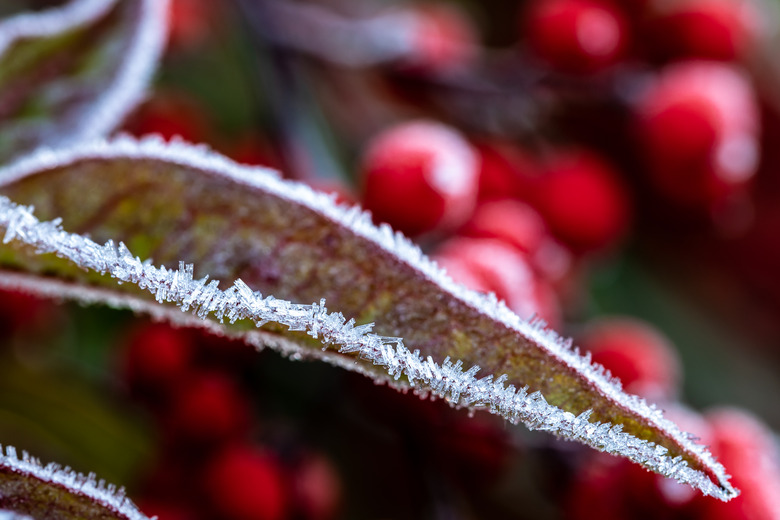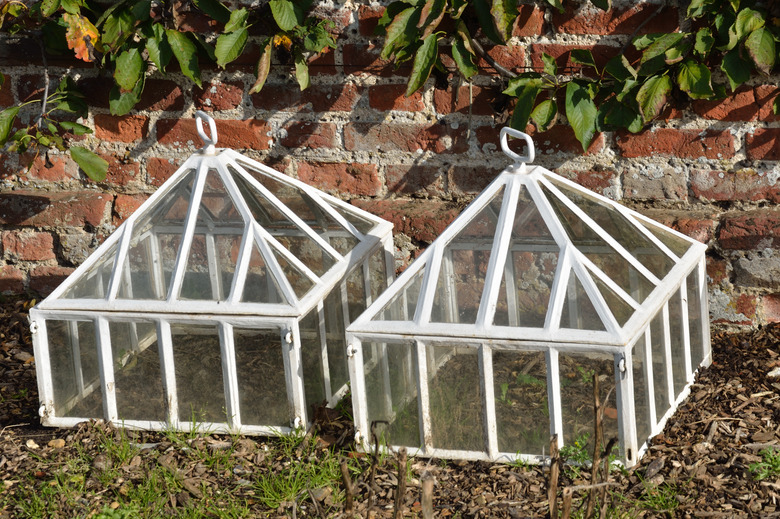How To Protect Plants From Frost
When the air temperature reaches the freezing point, water inside plant cells begins to turn into shards of ice that cut open the cell walls and destroy plant tissue. Whether you have a large garden or small containers, you can protect your plants from a light freeze during transitional weather with a quick cover-up. During early spring, protect seedlings, flowering fruit trees and shrubs, spring-blooming bulbs, and container gardens. During early fall, extend the life of potted plants, ornamental plants, and fall vegetables. However, if you grow herbs, harvest them before the threat of a freeze to preserve the best flavor. Also harvest peppers and tomatoes because they're better off ripening indoors. So, let's uncover the details of the quick plant cover-up.
When a meteorologist forecasts temperatures near the freezing point, keep in mind that cold air settles in low areas. So, if you live in a valley or have low spots in your yard, you may experience colder temperatures than those predicted. Covering plants protects them from a light freeze, which is when temperatures fall only a few degrees below freezing for a few hours. A hard freeze or killing frost occurs when the temperature drops below 28 degrees Fahrenheit for a longer period of time. The colder temperatures kill the top growth of most perennials and vegetable crops.
Things Needed
-
Cloth, such as bed sheets, pillowcases, lightweight blankets, tablecloths, towels, or commercial plant covers
-
Plastic material, such as tarps, plastic sheeting, garbage bags
-
Other rigid items, such as a glass dome cloche, glass jar, plastic jug or bottle, bucket, cardboard box, garbage can, or terra cotta pot
-
Garden stakes, U-shaped wire pins, bricks, or rocks to prevent wind from moving cloth or plastic coverings
If you have container gardens, carry small ones indoors. Move larger containers under the eaves, where they'll be more protected from the elements. Next, water the soil around plants, shrubs and trees because moist soil holds more heat than dry soil. If necessary, add more mulch to protect the roots. Now the plants are ready to be covered.
When possible, spread coverings before sunset to capture warmth in the soil. Choose coverings for each garden bed, container, shrub, or plant that will adequately cover the area. To adequately protect plants, a covering must be large enough to drape over the entire plant or garden bed and touch the ground to trap warm air that rises from the soil. Use any of the materials listed above, ensuring they aren't so heavy that a plant could be crushed under its weight. People typically prefer using cloth over plastic sheeting because plastic cannot touch the leaves; otherwise, the cold from outside will transfer to the plant. If you do use plastic material, create a tent structure with lawn furniture, wooden stakes, tomato cages, or overturned wheelbarrows as a frame. On a windy night, layer a blanket over the plastic tent to increase insulation.
Remove coverings in the morning, preferably late morning because the temperature can still dip after sunrise. If you remove the covering too soon, light frost might harm some plants. However, unless temperatures will remain below freezing, don't leave the covering on all day, since this can cause plants to overheat.

